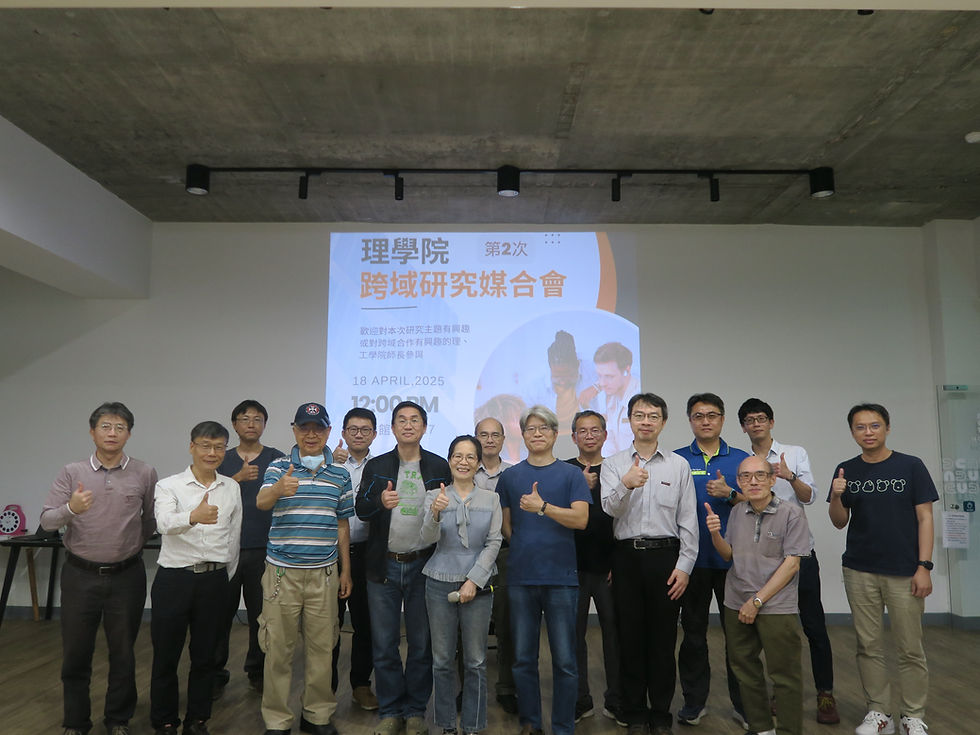Summer School Program of Hiroshima University
- Sarah Cheng
- 2021年9月22日
- 讀畢需時 3 分鐘
已更新:2023年7月26日
Integration Between National Central University and Asia-Pacific Academic Circle Summer School Program of Hiroshima University
Article/ College of Science

Opening of the online summer school of Hiroshima University of Japan. Photo provided by College of Science.
In the summer break of 2021, the College of Science of National Central University of Taiwan recommended Yi-Chang Tsai (student from the Department of Chemistry), Yen-Chen Lee and Ling-Chiao Tseng (students from the joint science program in College of Science) to participate in the online summer school organized by Hiroshima University of Japan. The period of the school is September 9 to 11. The summer school was carried out in the style of online conferences. There were totally 25 students from Taiwan, Indonesia, and Vietnam attending the school for the purpose of cooperation among universities in the Asia-Pacific area. It gives the opportunity to explore the knowledge of chemistry, and organize the group activities by students from different countries, so that the students can approach the international and Asia-Pacific academic circle even from home.
In the first two days of the program, there were four professors from Hiroshima University sharing their results in their research fields, encouraging students to give feedback on what they learned in the class. The project for the third day was about the communication and the exchange of thoughts between students from different teams. At this time, Professor Abe from the Department of Chemistry of Hiroshima University gave a talk about his research on photochemistry and its application to mice. During the experiment, the students realized the mechanism of brain acquisition and comprehension by knowing the conductive material of caged compounds. The students really enjoyed the lecture by Professor Abe, and they gained much more knowledge from his innovative research on biochemistry.
According to Yi-Chang Tsai’s description, what really impressed him is that, during the group discussion, one of the teams proposed the idea of developing the chemicals that can prompt the decomposition of the detergents. The idea comes from an Indonesian student who tries to solve the long-term pollution in the rivers caused by the emission of detergents from houses. This proposal can be helpful for saving the ecological environment and maintaining the clean water resources. Another student Ling-Chiao Tseng mentioned that, in this program, she and her teammates wish to find a cheaper and friendly-to-environment reagent for COVID-19 to help the people who are in lack of the medical resources. As the team leader, she admitted that the discussion among teammates was difficult due to the language barrier and the limitation of the internet. She expects herself to improve her ability of foreign language, and looks forward to performing better in international conferences in the future. Student Yen-Chen Lee said, through the communication in this activity, the teammates were inspired and learned from each other, and established precious international friendships.
Hiroshima University organizing the summer school wish to see the science students from different countries can discuss the issue of Sustainable Development Goals (SDGs), which were brought out by the United Nations (UN). We hope that the students participating in the program not only have the achievement in academic fields but also sense the shortage of energy in the near future. We see in the future that, chemists will develop usable energy from the solar systems through the absorption of molecular for a sustainable cycle of natural energy. By participating the summer school, College of Science of National Central University aims to enhance the academic communication and establish the friendship among students in the Asia-Pacific area.

Professor Ishizuka of Hiroshima University showed how to transform optical energy into kinetic energy by Crookes radiometer. Photo provided by College of Science.

Professor Saitow of Hiroshima University explained how the material influences photochemistry. Photo provided by College of Science.



